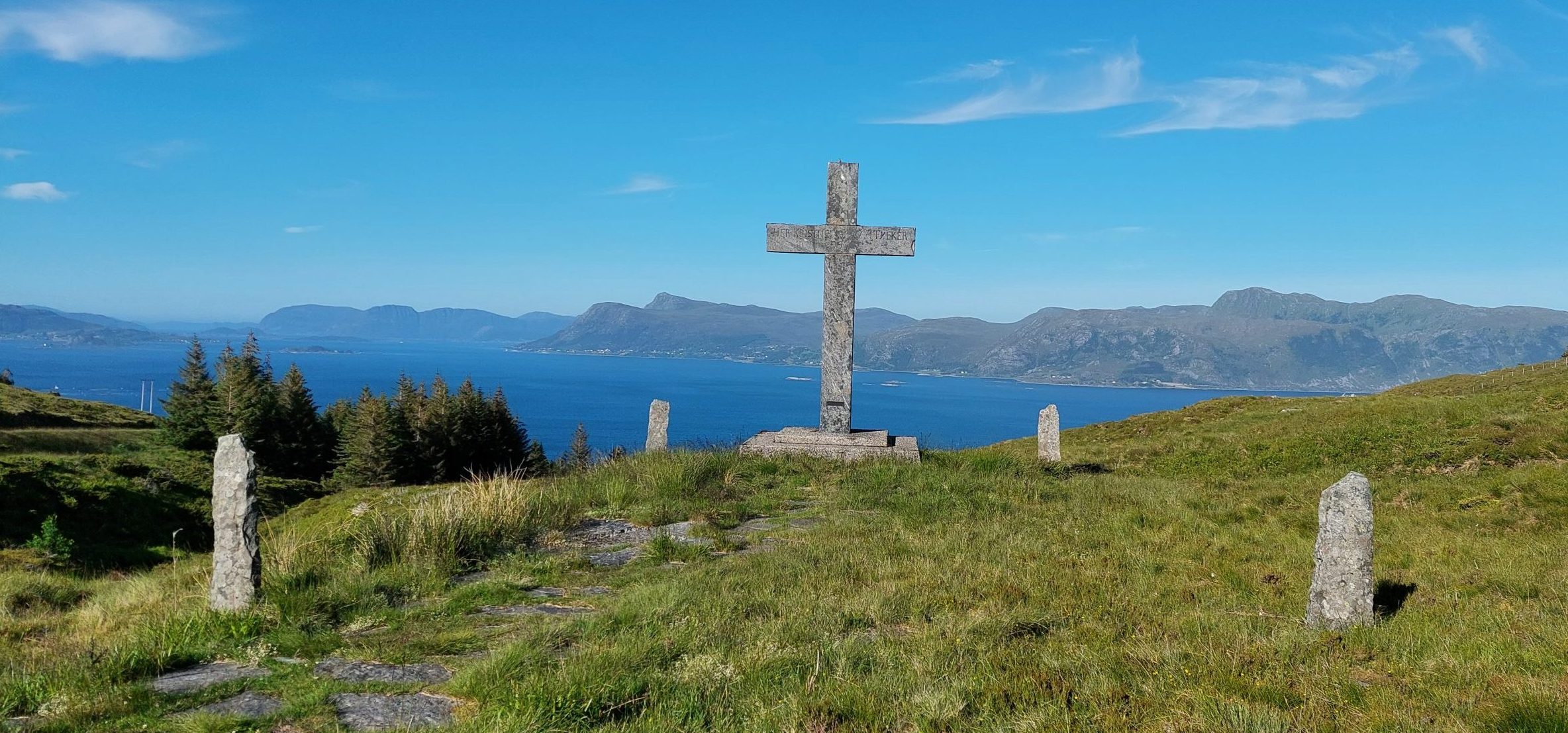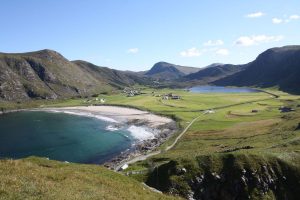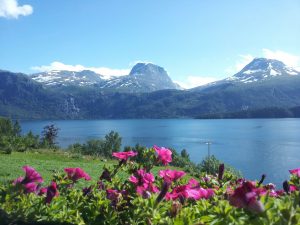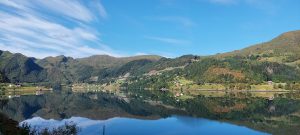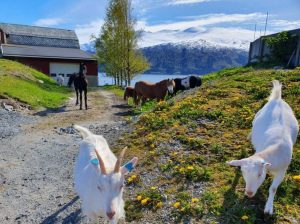Dragseidet is also well known from the saga in which it is written that Olav Tryggvasson called the leaders from four counties to things (traditional governing assemblies) here in 997 to get them to receive the new Christian faith. A monument stands on ‘Kongshaugen’ (the King’s Hill) at the highest point of the isthmus. Further north, a stone cross was erected in 1913 to commemorate the Christianization efforts in 997, in which the peasants, according to the saga, had the choice between baptism and accepting the Christian faith or battling against King Olav’s men. When the peasants saw that it was not advisable for them to turn against the king, it was decided that all the people should submit to Christianity. After this, King Olav marched his army to Nordmøre and christened that county, too.
Dragseidspelet “På Sverdeggja” is an open-air play based on this history. The play is written by Rolf Losnegård and was performed for the first time at the large-scale 1,000 year anniversary of the event in 1997. A Viking square was built on the site where the legend states that the events took place. Around 8,000 people watched the anniversary performances, which were opened by HisMajesty King Harald. Since the anniversary in 1997, the Dragseidspelet has been performed eleven times. The historical source of the play is found in Snorre and in Dagfred Berstad’s translation of parts of Flatøyarbok from Icelandic to Norwegian. The book also contains the basis for the story about the main character in the play, Ragnvald from Ervik in Stadlandet. Ragnvald is a great and prominent man. As prisoners of the King, he and his family play a prominent role in the plot. The drama balances on the edge of the sword, from fierce battle scenes to gentler sentiments and pathos.

